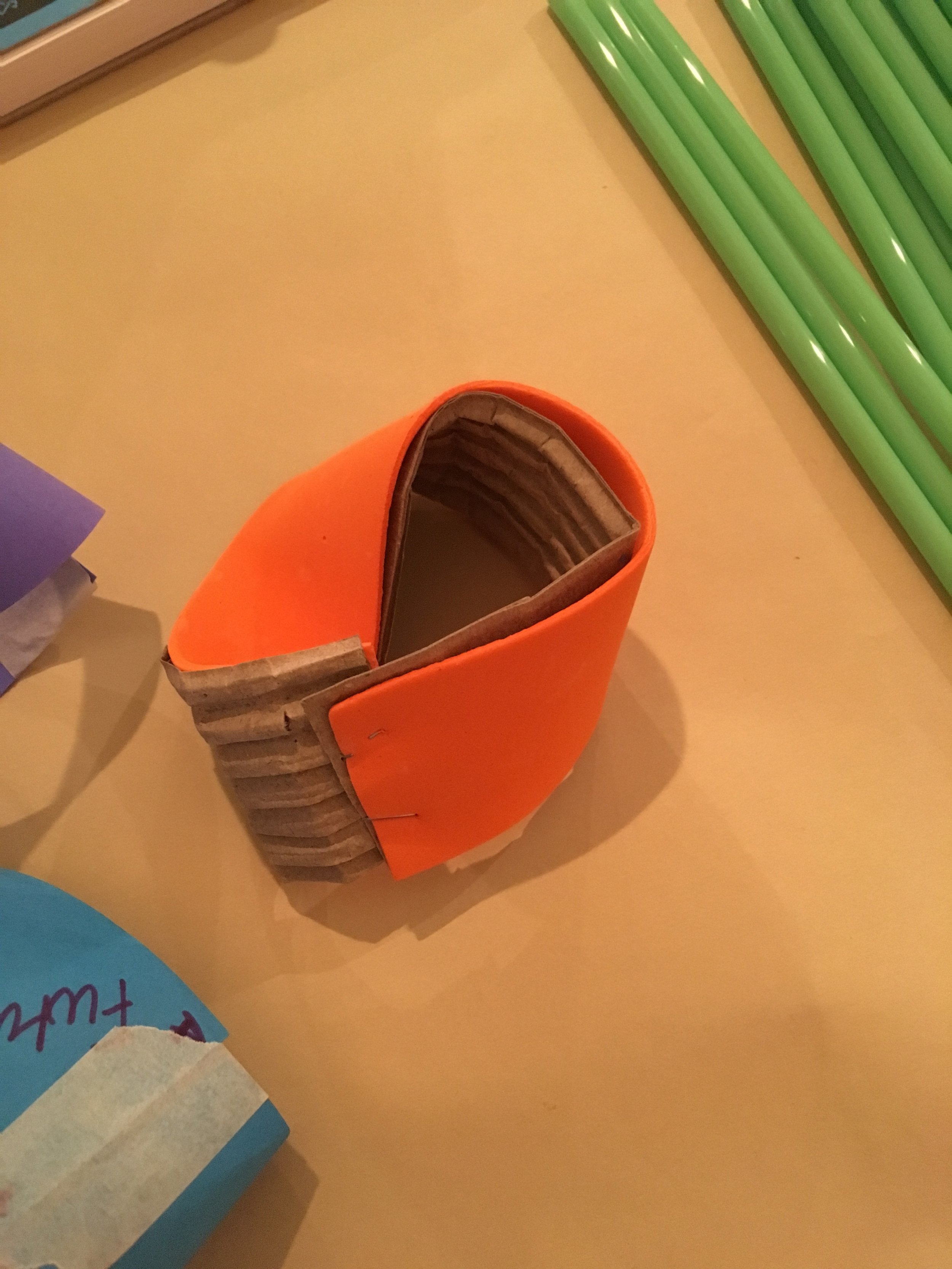Friends, it's so great to have you journeying along with us here. To be perfectly forthright, it's been an interesting challenge to play the roles of facilitator, chevrutah partner, and documentor all at once. Then again, how appropriate for a series leading up to Pesach and the Seder, right? Ideally, at the seder we get to be leaders and participants, and in some sense, documentors of our own experience, all in one staged and planned, yet unanticipatable journey.
We've now been learning and creating together for a few weeks, so at the start of our fourth session we were ready to do a little reflection on where were in our process. Aliza designed a project diagram for us to concretize what we were working on, and we'll use our notes as a guide as we move forward.
To start us off, here's a little video, just to give you a sense of the focused energy in the room as we tinker our way into exploring the existential questions within the Pesach experience.
A few of the chevrutot have been exploring the ways that we're both in the story and above the story, almost watching from a bird's-eye view at various points in the seder. We see this in the choice of the Vidui Bikkurim (the concise retelling of the Exodus story when bringing first fruits to the Temple in Jerusalem) as one of the central texts that the Haggadah is spun out from. We might have expected that the whole text of the haggadah would be based around a more present-tense statement of the drama, so it's meaningful that this isn't wholly the case. We also see this in the Talmud's declaration that "בכל דור ודור חייב אדם לראות את עצמו כאלו הוא יצא ממצרים" (Psachim 116b), "In every generation one but see themselves as though they themselves had left Egypt." There's a wonderful multiphonic situation being set up here, in which we are enjoined to both see experience being actors in the drama, but also recognize that we are constructing that experience of the drama -- we are tasked with seeing ourselves AS THOUGH we had left Egypt.
On this basic foundation, Aliza and Ariel have been testing out different prototypes for tangibly illustrating multiphonic themes or dualities that we are asked to hold at once during the seder. They've been playing with the idea of interlocking mobius strips, which might have various dualities written on them, or perhaps related questions. The materials used to make each mobius strip will signify the themes it speaks to in some way. Participants in the seder might hold on to a link in the mobius strip chain, and this could serve as an entry point for conversation -- they're still figuring out how that might work!
Andrea and Eliezah are working on two projects simultaneously. The first they see as a framed set of prompts that, as above, explore dualities in the seder. They do this by means of little durable framing squares, with a reveled word, and its pair word hidden underneath the flap. Participants hold up the squares, and as a group, guess what the pair word might be. When it is reveled, discussion can ensue as to what the significance of that pair or duality is to our Pesach experience. They've been experimenting with what materials would feel fun and be durable, but would also convey a sense of meaning with regard to the themes they're highlighting, and a sense of beauty. (Also, there's an abiding love for glitter paint in this group, which I initially didn't understand, but am grateful for the opportunity to grow.)
Andrea and Eliezah's second project is much more open ended. They're constructing a number of objects, each of which highlights a key element of the seder. The objects will be placed along the length of the seder table. Participants can pick up an item, and use it as a prompt for discussion of its possible significance in the seder amongst the group of people sitting near them.
Jonathan (and, when she graces us with her presence, Rena) describes his project at this stage like this "Minimalistic Baby Face with one piece of wire symbolizing unlimited potential, interest, experimentation, and Freedom - getting ready for Passover with “Reishit”." We had a few minutes last session to ask each other questions about our projects (which remained unanswered, thus far, by design), and the questions Jonathan was asked included, "How will this be used at the seder? Do participants engage with it in tangible ways? Or is it intended to be looked at and discussed?" and "This seems like a very fragile piece. Is that intentional, and have you considered exploring what might happen by making it more durable in some way?"
Eli and Mira are have been in serious tinkering mode, starting from a real enjoyment of testing out what various materials might shape up to be, and from that foundation considering exactly how those speak to the themes they'd like to explore. They're still investigating what exactly the box with semi-translucent paper is and how it will be used. Eli was experimenting with watercolor painting on the tracing paper, while Mira was weaving a bikkurim basket out of wire and cardboard. Can't wait to see what comes of all this tinkering!
Desmid and Chana Ella started with a really clear idea early on, and they've been building the components ever since. They're working on a shadow puppet theater, which will tell the story of one family's journey across generations and places, but in a way that strips away certain details in order to highlight universal themes.
Laya and I have the least to show since our chevrutah formed a bit late in the game, but we are excited to begin creating on the basis of our learning and discussion this past week. We've been discussing how we process the Mitzrayim/Egypt experience as one which is described as
אנוס על פי הדיבור, forced by way of Divine command. How do we process experiences that we seem destined to go through, but that we also need to get something out of, and to have some sense of agency in the experience. What did we need to get out of the MItzrayim experience? How do we gain access to that through our experience of the seder, and what might help us do that?
And so here we are. I'm super excited to be continuing to bring these projects to clarity, and just generally be asking big questions by way of cardboard and hot glue guns with these beautiful makers.
Let us know what you're working on, what you're thinking about in advance of the seder, or wanting to change or keep from seders past. We'll check back in soon with more updates.






















